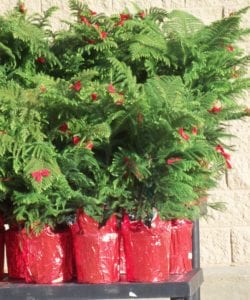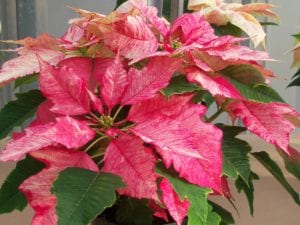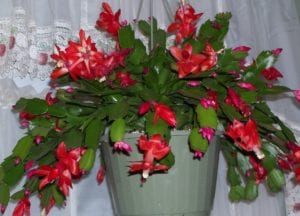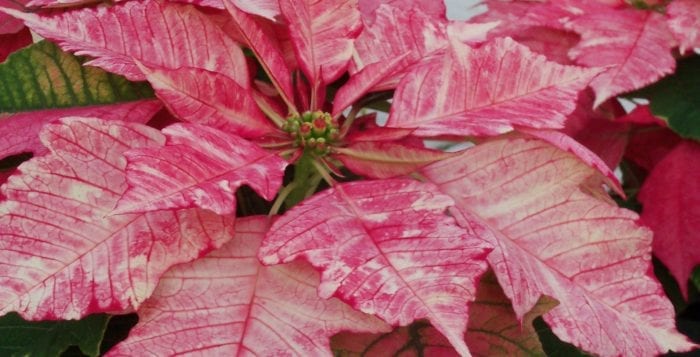Gardening: Choosing festive indoor plants for the holiday season
By Ellen Barcel
It’s getting to be that time — the time of year when the stores are filled with irresistible holiday plants. Before you make that purchase or purchases, there are some things to remember.
First, little kids and pets have a very bad habit of putting everything they see in their mouths. While some plants are safe, others are toxic. Make sure that your children and grandchildren as well as your dogs and cats can’t get at your holiday plants. A trip to the ER should not be part of your holiday experience.
Second, if you are treating that plant as you would a bouquet of flowers, that is, a decoration for a brief time, then of course put those plants where they do the best for the décor. If, on the other hand, you wish to keep your holiday plants growing year round, then you must treat them kindly. Put them where they will get enough light. Remember to water them accordingly. Don’t overwater any cactus plant, for example, but don’t let your poinsettias dry out.

Some plants need enough humidity, like the Norfolk Island pine, which is so popular this time of year. Frequently decorated with sparkles and red bows, it makes a nice alternative to a full-sized Christmas tree. I’ve seen them in the supermarket, moderately priced, for about three feet tall. Add a few of your own decorations and you have a really nice holiday tree. I kept one growing for a number of years before the dry house air in winter finally did it in.
If you are planning to have amaryllis blooming for the holidays, you need to have that bulb planted approximately four to six weeks before the desired bloom date. While most are a bright red, there are white, pink and variegated varieties. To keep them blooming for the next year, remove the spent flower but keep the green leaves growing. You need to fertilize the plant as it is growing, since this year’s bloom is based on what the grower did the year before you bought it. The bulb will then go dormant for a number of months. If you’ve treated the bulb right, it should start to grow and bloom again in November of next year.

If you choose a poinsettia, make sure that the yellow flowers (the tiny part in the center of the “bloom”) are tightly closed, with no pollen on the red petals (actually bracts, modified leaves). This means that the flower has not really bloomed yet and will last longer in your house. If you see that the yellow flowers are open and that the pollen is out, it means the plant is an older one and will not last as long in your house.
Yes, you can try to keep a poinsettia year to year, but my experiences have not been positive ones. I treat them as I would a bouquet of flowers, nice for a decoration but to be discarded when the bloom fades. If you get one of those “doctored up” varieties, sprayed a different color or sprinkled with glitter, and are able to keep it growing year after year, you will, of course, just get the plain red bracts in future years.

Christmas cacti are much easier to keep growing year after year. They don’t mind the dry air so common in most winter houses. To get the cacti to rebloom year after year, put them in a totally dark room (or closet) each night for about two months before Christmas. The dark, the experts say, will trigger the formation of flowers. It has been my experience that as long as I keep my cacti in a very cool room (for me, my dining room) during the autumn months, the buds form. Of course, my dining room tends to be a fairly dark (but not totally dark) room in the fall.
Ellen Barcel is a freelance writer and master gardener. To reach Cornell Cooperative Extension and its Master Gardener program, call 631-727-7850.







